 |
| Me, photo by Chris Dodkin |
Here's a shot of the exterior...
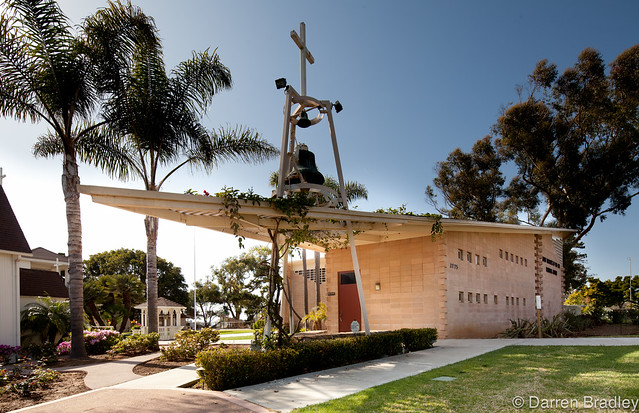
While in there, a woman who volunteered at the church came in and we struck up a conversation. She was surprised to learn that I really liked the building! She knew the name of the architect, surprisingly, and also a bit about the design. But she preferred traditional designs and didn't think it felt enough like a church.
This seems pretty common these days - most people don't appreciate or understand modernism. But it got me to thinking about churches, in particular.
What happened to churches and other places of worship in the 1950s and 60s? It seems that almost overnight, they went from being the most conservative and traditional-looking buildings in town to the most modern and imaginative. And now, again, back to trying to look traditional...
For centuries, the architecture of churches - more than any other type of building - remained essentially unchanged. Even as materials and techniques modernized, the style stayed basically the same.
Makes sense. Places of worship tend to appeal to a sense of constancy and stability as a way of reassuring people. "We do things this way because this is how they've always been done..."
This cathedral in Martinique, for example, was designed and built with a revolutionary steel superstructure that was the marvel of the world at the time. But architect Pierre-Henri Picq made sure it looked just like the old ones. I see a mish-mash of neo-gothic, romanesque, and byzantine design here...
Then, all of the sudden, starting in the 1940s and really into the 50s and 60s, we started to see this all turned on its head.
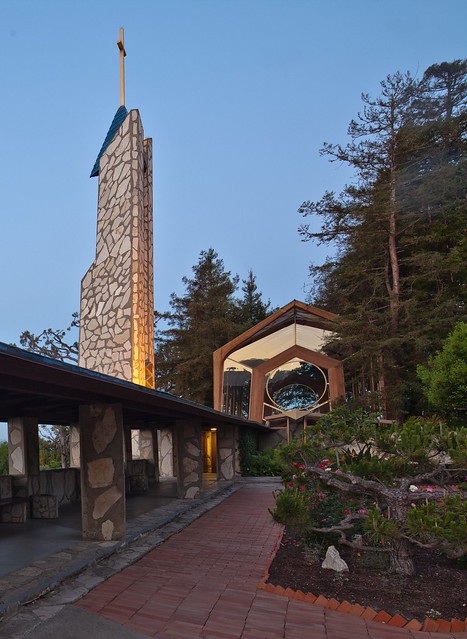 |
| Wayfarer's Chapel by Lloyd Wright (1949) |
Suddenly, it's as if churches didn't want to be seen as bastions of tradition anymore. They wanted to be hip!
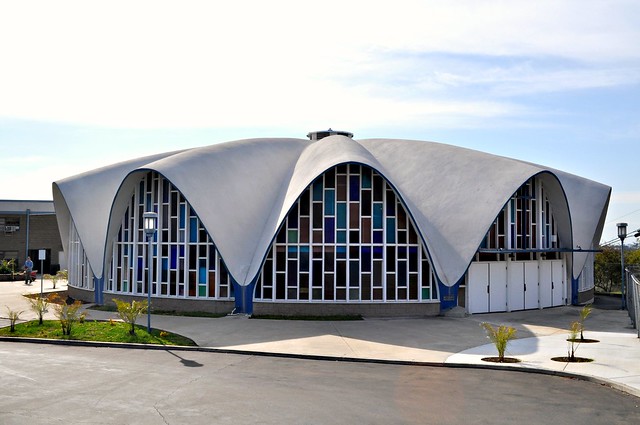 |
| Calvary Southern Baptist Church in Linda Vista by Robert des Lauriers (1963) |
They wanted to be modern!
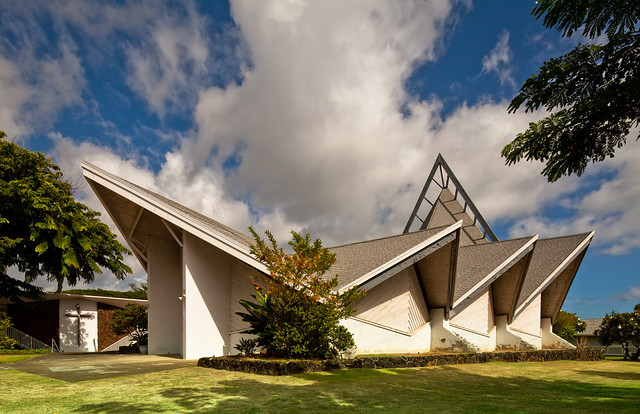 |
| Kailua Baptist Church by Jerry Allison and George V. Whisenand for Wimberly & Cook, later Wimberly Allison Tong & Goo (1959) |
They wanted to be different!
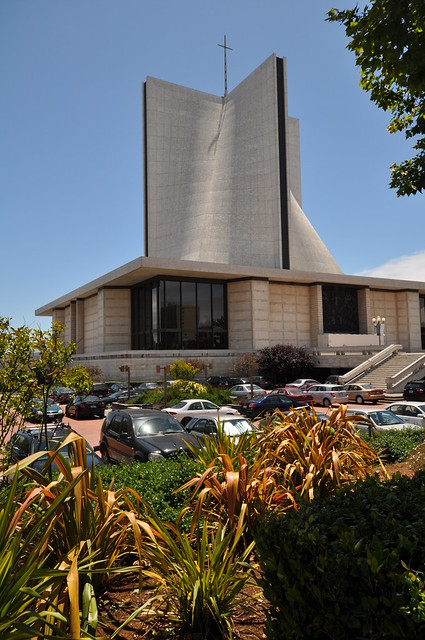 |
| St. Mary's Cathedral in San Francisco, by Pier Luigi Nervi (1967-70) |
They went from this...
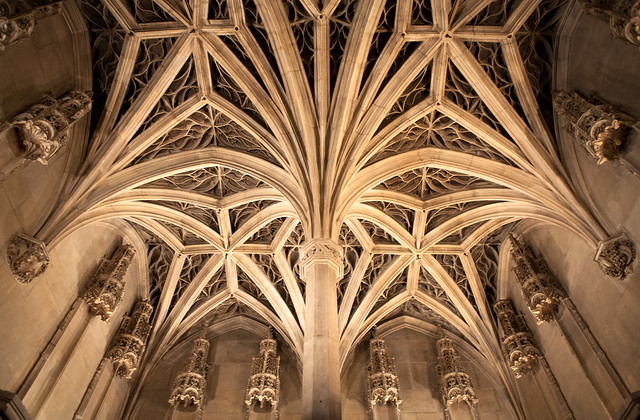 |
| Ceiling of the chapel at the Hotel de Cluny, Paris, France (15th c.) |
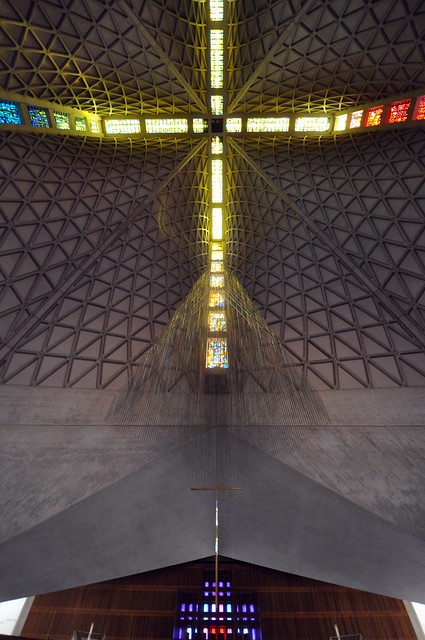 |
| Ceiling of St. Mary's Cathedral, San Francisco (1967-70 |
Churches suddenly propelled themselves into the forefront of Modernism, with designs that were far more avant-garde than those found in any other type of building.
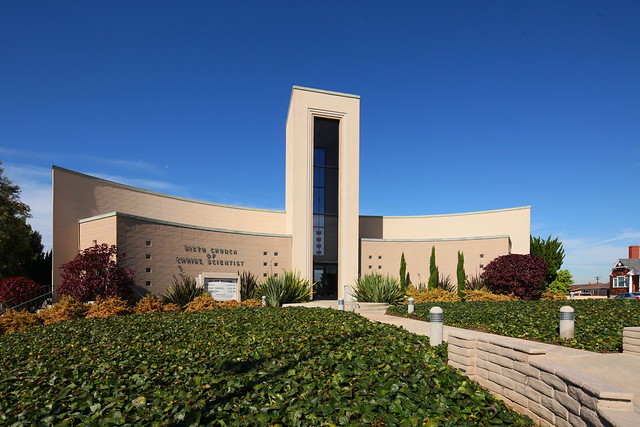 |
| First Church of Christ, Scientist, in San Diego (Point Loma), CA |
 |
| College Avenue Baptist Church in San Diego, CA (1966) |
Now I'm not exactly the church-going type, but I've become completely fascinated by these creative structures that are peppered throughout every city in the world. I just love their variety and the creative ways that they've tried to evoke spirituality, hope, optimism, and other good thoughts in a non-traditional way.
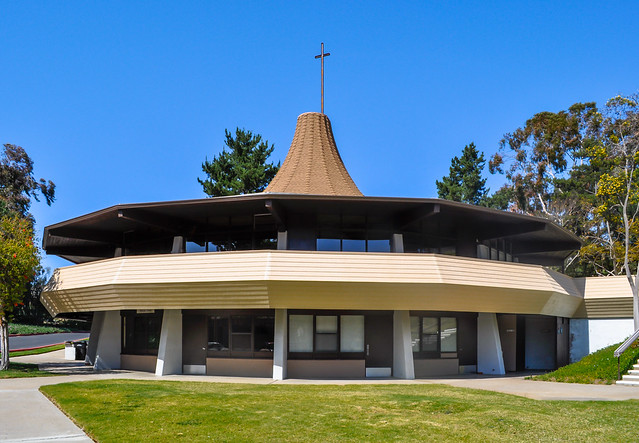 |
| Pacific Beach Community Congregational Church by Richard "Dick" Lareau (1966) |
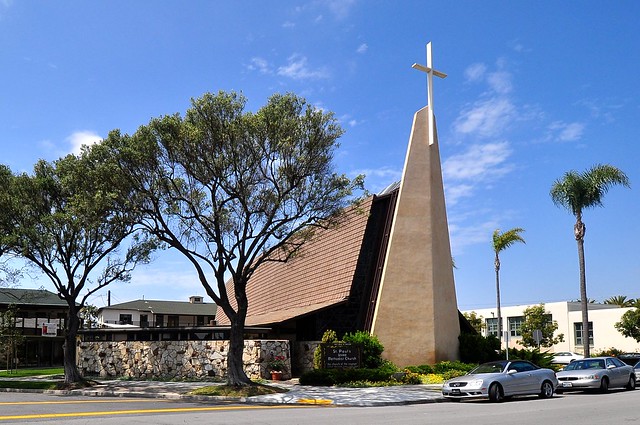 |
| St. Paul's Methodist Church in Coronado, CA |
 |
| Waikiki Baptist Church in Honolulu, HI |
And as most businesses and homes have tried to erase the traces of modernist architecture during the past 30 years or so, it seems that most churches have more or less preserved their buildings and they've remained intact (despite the feelings of the woman at St. Michael's by the Sea).
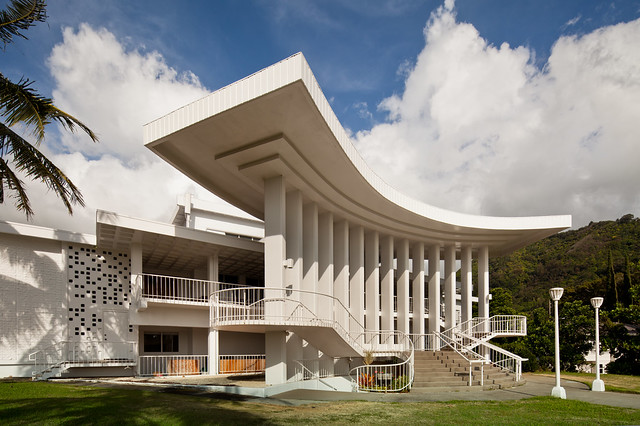 |
| Toho No Hikari (aka Church of World Messianity) in Honolulu, HI |
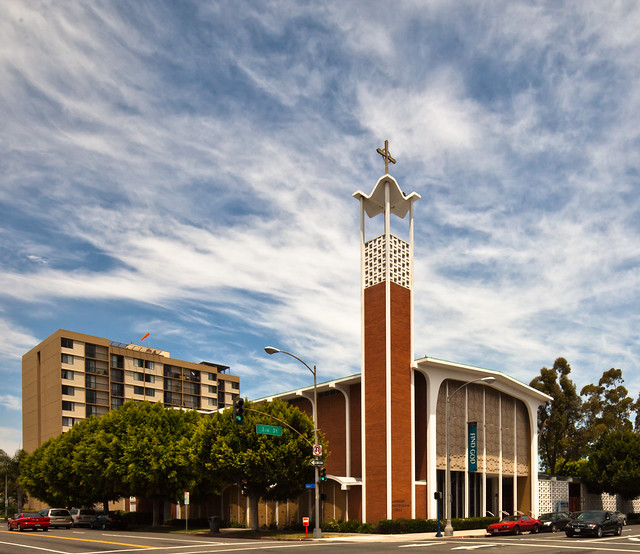 |
| Covenant Presbyterian Church in Long Beach, CA |
Even small town community churches got into the act. This was about the only interesting 20th century building that I found in Niagara Falls, Ontario (below).
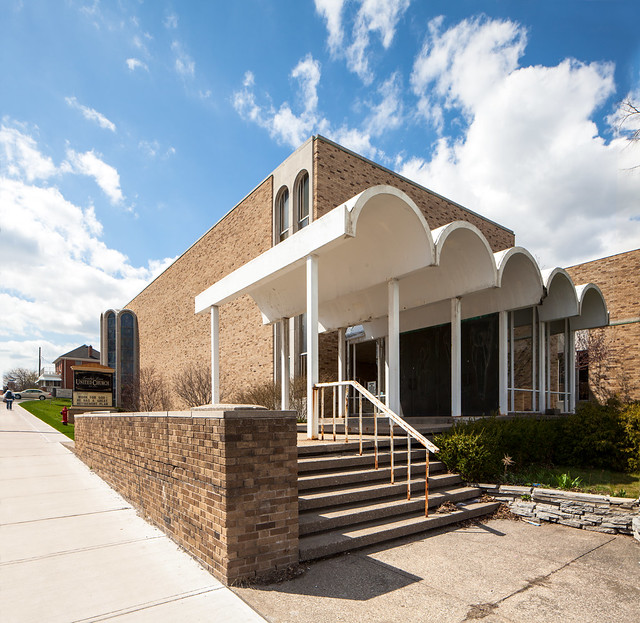 |
| Lundy's Lane United Church in Niagara Falls, Canada |
Even the tiny little town of Independence, California has one!
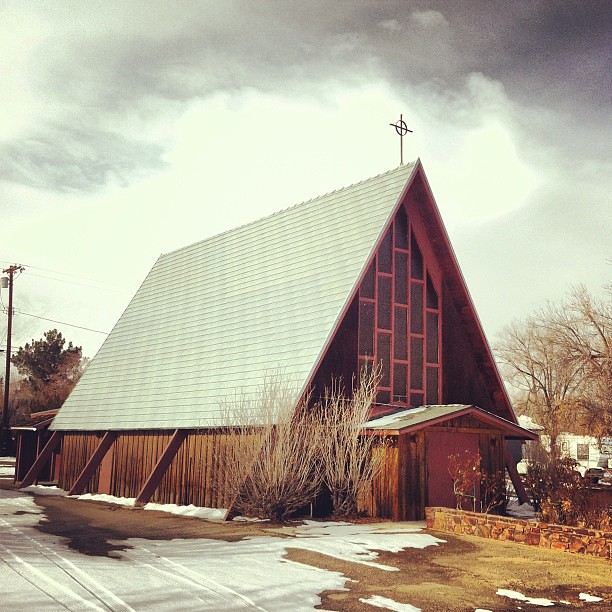
So ironically, it seems these modernist churches have now become what is perhaps the most enduring symbol of a bygone era, and worth a stop the next time you see one - regardless of your religion.
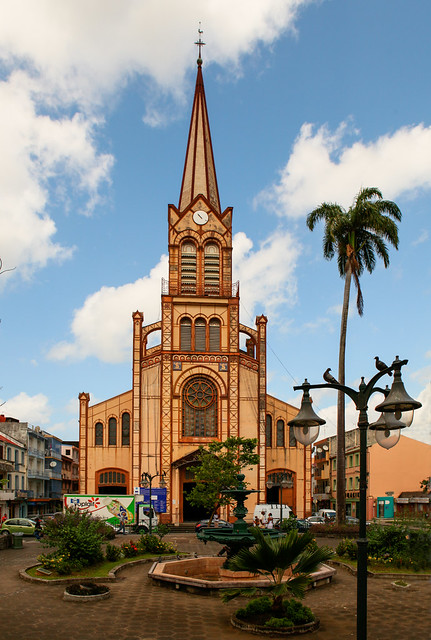
5 comments:
Hey I read your comment on ArchDaily from months ago (http://www.archdaily.com/385013/the-traditional-versus-the-modern-in-church-design/#comment-5315209), I left a comment myself...
It's a really interesting topic, the drastic change is basically consequence of the Second Vatican Council. The reason for which some architects are bringing back traditional typologies is because the Council was missinterpreted, and so now some past design decisions are being reconsidered. This doesn't mean, at least to me, that new churches should be like mirages of the past, consequence of some nostalgic feelings -architecture should always be authentic-, but there are main considerations that can't be dismissed... I hope you look into it, this topic is definitely not as forgotten as it seems
This video should help a lot:
http://youtu.be/oEqRlE8m3DI
You should see the works of Uno Prii in Toronto some day. We have lost a few modernist examples... but saved many more in the Annex, along Wynford Drive, etc.
For centuries, the architecture of churches - more than any other type of building - remained essentially unchanged. Even as materials and techniques modernized, the style stayed basically the same. كم اسعار الخيام الاوروبية | اسعار الخيام الاوروبية
my review hereMore Bonuses navigate to this websiteuseful link navigate to this websitemy response
Post a Comment